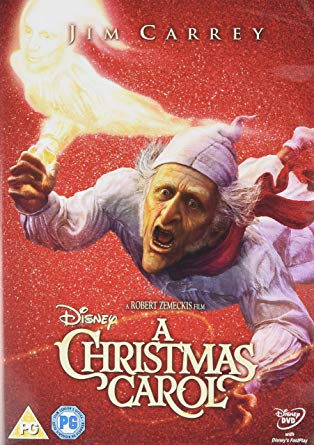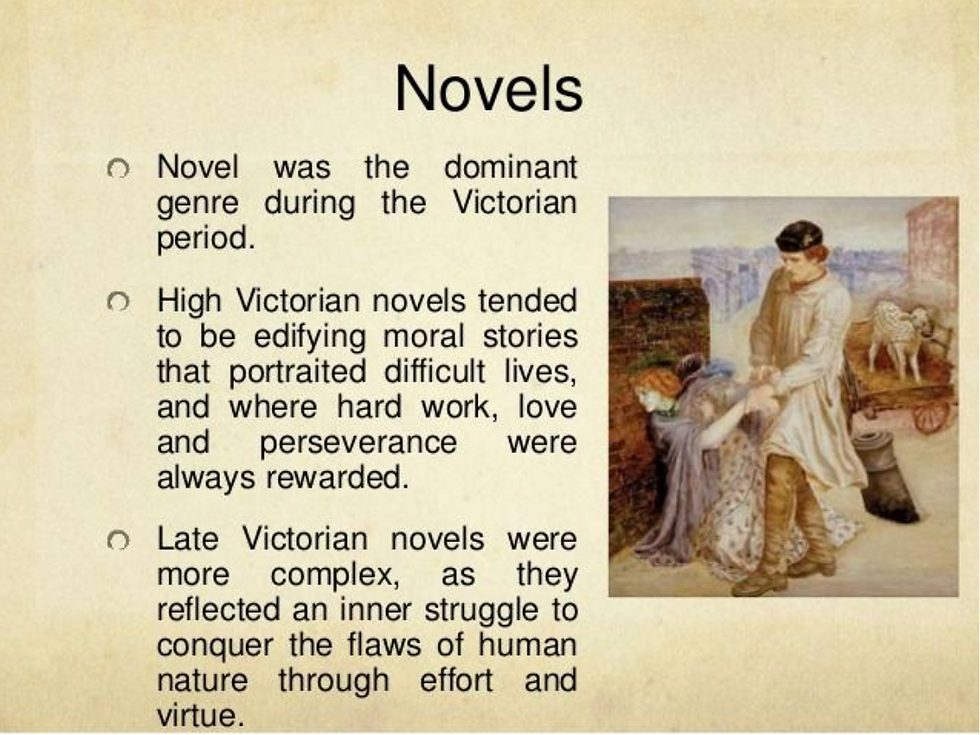EVOLUTION OF
THE MODERN NOVEL
GROUP 3: Cody, Cassie, Caed & Allie | TLIT 458 | SPR 19

Since Dickens book, there have been many movie creations based around the story of Ebenezer Scrooge. This is a movie cover of Jim Carrey's animated edition.

A brief powerpoint slide describing the novels of the Victorian era.

A screencap of Jim Carrey portraying Ebenezer Scrooge.
1600 - 1900: A CHRISTMAS CAROL
*Please, press play on the track above to enjoy the music believed to be enjoyed during this time period.
A Christmas Carol: Charles Dickens
Ebenezer Scrooge, a successful yet shrewd capitalist, initially seeks wealth and power above all else.
Through his cutthroat business tactics, greed, and merciless demeanor, Ebenezer grows his wealth.
Alongside this expansion of wealth also grows his unhappiness, his unlikableness, and his resentment
towards joy.
Only until after a visit from three ghosts, the ghosts of Christmas past, present, and future, does Scrooge
see the faults in his ways. He then changes his view of the world and his actions within it. A Christmas
Carol by Charles Dickens is a portrayal of how power corrupts, greed consumes, and how to rid yourself
of both enriches a person’s life. Dickens, by using the spirit of Christmas and the hedonist value in
altruistic acts, displays the uselessness of social standing. He gives his characters depth by showing that
beauty, happiness, and worth are not defined by class, but by character.
The story, of course, is about the upper class. This novel strays from previous works, however, because
it pokes holes in the idealistic social structure of class, and that to willingly share wealth, prosperity, and
happiness should be the ultimate goals of an individual. Straying from Oroonoko, where the protagonist
was forced to give up status, Dicken’s aimed his novel to betray societies’ ideas surrounding success,
and so allow “the inclination to identify with the middle class rather than the proletariat” (Orwell, 1962)
, and instead insisted that all people deserve an ear, no matter their rank, and that wealth is not just
about money or materialistic things. While this idea was not new, it was never given the soap box of
Dickens, and thus spread further the umbrella of what a novel could successfully include: the everyday
man living a fruitful life.
This novel benchmarked the shift of who gets heard, who gets deserved sympathy, and how we should
structure our world. While these ideas were common during the Victorian Age, they were never penned
so effectively, and never reverberated so greatly throughout readership. The radical change of the
idealistic class structure began to reflect in literature, and A Christmas Character transformed the
narrative for future authors to follow.